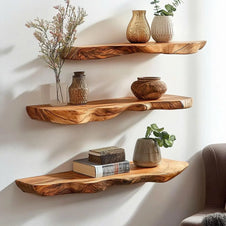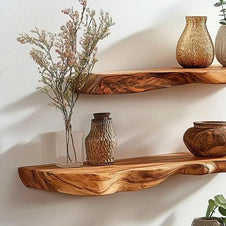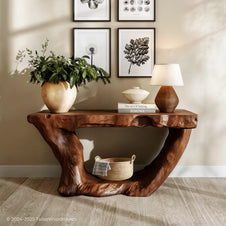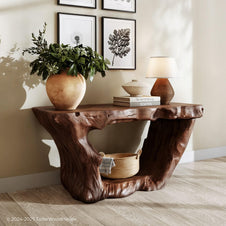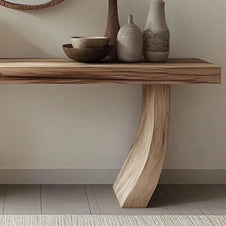When it comes to building or buying shelves, one of the most important decisions is the material—specifically, the wood. Knowing what is the best type of wood for shelves helps you strike the perfect balance between function, beauty, and budget. Whether you're installing floating shelves in your kitchen or building a custom bookcase for your office, the wood you choose affects weight capacity, longevity, aesthetic, and even safety.
In this guide, we’ll break down different types of wood—solid and engineered—by their pros, cons, and ideal use cases. We’ll also give real-life styling tips, care suggestions, and visual cues to help you confidently decide what is the best type of wood for shelves in your home.
1. Solid Wood: The Gold Standard
If durability and natural beauty are your top priorities, solid wood shelves are often the answer to what is the best type of wood for shelves. Common options include:
Oak
-
Pros: Extremely strong, classic grain, takes stain well
-
Best for: Bookshelves, floating shelves in offices or living rooms
Maple
-
Pros: Dense and durable, smooth texture for painting or staining
-
Best for: Kitchens, kids’ rooms, high-use shelves
Walnut
-
Pros: Rich color, high-end appearance, stable over time
-
Best for: Statement shelves, modern or rustic interiors
Pine
-
Pros: Lightweight, budget-friendly, easy to work with
-
Cons: Softer wood—may dent easily
-
Best for: Decorative or light-use shelving
 Explore our handcrafted solid wood shelf collection, featuring natural oak and walnut finishes ideal for timeless shelving.
Explore our handcrafted solid wood shelf collection, featuring natural oak and walnut finishes ideal for timeless shelving.
When choosing solid wood, keep in mind that grain, knots, and even slight warping are part of the charm—and challenge. Always source kiln-dried lumber to reduce movement after installation.
2. Engineered Wood: When Budget and Uniformity Matter
While solid wood has undeniable charm, engineered woods offer consistency, affordability, and practicality. Understanding where they shine helps you determine what is the best type of wood for shelves when cost or weight is a concern.
MDF (Medium-Density Fiberboard)
-
Pros: Smooth surface, easy to paint, affordable
-
Cons: Susceptible to moisture, weaker under heavy loads
-
Best for: Painted shelves, short decorative spans
Plywood
-
Pros: Stronger than MDF, layered grain resists warping
-
Cons: Visible edges (unless veneered), may splinter
-
Best for: Utility shelves, workshop or garage spaces
Particleboard (with Laminate or Veneer)
-
Pros: Low cost, comes prefinished
-
Cons: Weakest of all, may sag over time
-
Best for: Temporary or lightweight shelving
 See how our plywood and MDF shelf options compare side by side in texture, color, and stability.
See how our plywood and MDF shelf options compare side by side in texture, color, and stability.
Engineered woods are especially useful for modular shelving systems, cabinets, or built-ins where uniformity is key. Still, be mindful of load-bearing expectations—these materials can’t compete with solid oak for strength.
3. Floating vs. Wall-Mounted vs. Freestanding
The type of shelf installation also affects what is the best type of wood for shelves in that scenario.
Floating Shelves
-
Look best with denser woods like maple, oak, or walnut for strength and clean finish
-
Require internal brackets—MDF may crumble if too thin
Wall-Mounted Shelves (with visible brackets)
Freestanding Units
🖼️ Bold this line to place image #3: Discover how wood type affects shelf sag over time in floating vs. freestanding designs.
For books, heavy cookware, or vinyl records, hardwoods or thick plywood are essential regardless of shelf style.
4. How Environment Impacts Wood Choice
Your room conditions matter more than you think when asking what is the best type of wood for shelves. Different environments can drastically affect wood longevity, especially in areas with high moisture, temperature fluctuations, or heavy use.
-
Bathrooms: Use sealed hardwoods or marine-grade plywood to withstand steam and humidity. Teak, cedar, or well-finished birch perform well here. Avoid MDF and particleboard as they swell and deteriorate when exposed to moisture.
-
Kitchens: High activity means your shelves must resist grease, moisture, and weight. Maple and oak are top choices. Applying a water-resistant polyurethane topcoat can significantly extend lifespan.
-
Living Rooms: Appearance takes center stage. Walnut, ash, birch, and cherry are all popular for their visual warmth. Stability matters less here, so even pine can suffice if well finished.
-
Garage/Workshops: Go practical. Exterior-grade plywood or pressure-treated pine handles tool weight and climate swings. Screws and brackets should be rust-resistant as well.
Additional considerations:
-
Don’t forget sunlight exposure: Woods like cherry will darken over time; pine may bleach.
-
Always seal all sides of the wood (even hidden areas) to prevent warping.
-
For basements, consider composite or sealed engineered options to fight humidity.
 Explore real-life examples of wood shelves aging in different environments and how finish type matters.
Explore real-life examples of wood shelves aging in different environments and how finish type matters.
5. Sustainability and Sourcing
Eco-conscious shelving isn’t just a trend—it’s part of defining what is the best type of wood for shelves today. As consumers prioritize both longevity and ethics, choosing wood with a smaller environmental footprint makes a big difference.
-
Reclaimed wood: Salvaged from barns, factories, or old homes, reclaimed wood is inherently sustainable. It adds charm, history, and character to shelving, though you may need to sand and seal it properly before use.
-
FSC-certified lumber: The Forest Stewardship Council (FSC) label ensures the wood comes from responsibly managed forests. This option bridges ethics and quality.
-
Bamboo: Technically a grass, bamboo is rapidly renewable, strong, and beautiful. It’s ideal for minimalist or modern designs and increasingly common in shelving units.
-
Domestic hardwoods: Using locally sourced oak, maple, or walnut reduces shipping impact. Supporting local mills can also mean better quality control.
Things to watch for:
-
Avoid exotic hardwoods (like teak or mahogany) unless they are certified sustainably sourced—they often contribute to deforestation.
-
Engineered woods like MDF can be eco-friendly if made with recycled wood fibers and low-VOC adhesives.
-
Always look for transparency: ask sellers where and how the wood was sourced.
Bonus tip: Shelves made from reclaimed wood or bamboo can become talking points in your tree bookshelf. They show intentionality and care—not just style.
 A sustainable mindset complements any answer to what is the best type of wood for shelves—because what’s good for your home should also be good for the planet.
A sustainable mindset complements any answer to what is the best type of wood for shelves—because what’s good for your home should also be good for the planet.
6. Style, Finish, and Design Considerations
Shelf style also influences what wood you should choose. Think about:
-
Modern/minimalist: Clean-grain woods like maple or painted MDF
-
Rustic/farmhouse: Reclaimed pine, distressed oak, or live-edge walnut
-
Industrial: Combine plywood with black metal brackets
-
Boho/natural: Use lighter-toned woods like birch or bamboo
Finish also plays a role in protection and aesthetics:
-
Polyurethane = durable gloss or satin
-
Oil finishes = natural, touchable matte
-
Stains = unify mismatched tones
7. Final Verdict: What Is the Best Type of Wood for Shelves?
There’s no one-size-fits-all answer. But here’s how to decide:
|
Use Case
|
Recommended Wood Type
|
|
Heavy-duty bookcases
|
Oak, maple, thick birch plywood
|
|
Budget display shelf
|
MDF or veneered particleboard
|
|
Floating shelf
|
Walnut, maple, oak
|
|
Bathroom/kitchen
|
Sealed hardwood or plywood
|
|
Rustic decor
|
Reclaimed pine, cedar
|
See detailed shelf load tests by wood type from Doityourself
Conclusion: Choose Smart, Build Better
Choosing what is the best type of wood for shelves starts with understanding your needs—then balancing aesthetics, budget, and environmental conditions. The right wood transforms a simple board into a beautiful, lasting feature of your home.
From solid oak to sustainable bamboo, engineered panels to reclaimed barnwood—your shelf tells a story. Make sure the wood you choose speaks clearly, supports confidently, and lasts beautifully.
Whether you're buying pre-cut units or crafting your own, you’re now equipped to choose the perfect material—and make your shelves stand the test of time.

